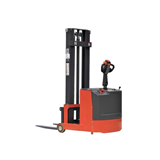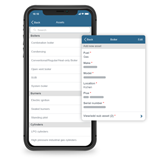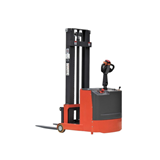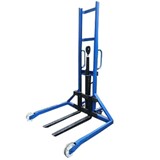Proper maintenance is essential to ensure the safe and efficient operation of a reach stacker. Regular inspections and maintenance tasks help identify and address potential issues before they become major problems, reducing downtime and increasing the lifespan of the equipment. This ultimate reach stacker maintenance checklist provides a comprehensive guide to help you keep your reach stacker in optimal condition. By following this checklist, you can ensure the smooth functioning of your reach stacker and promote a safe working environment. Remember to always refer to the manufacturer's guidelines and recommendations for specific maintenance procedures and intervals.
1. Understanding Reach Stackers
Before we delve into maintenance, care, and troubleshooting tips, it is crucial to have a solid understanding of reach stackers. These powerful machines are specifically designed for handling intermodal containers in ports and container terminals. With their ability to lift and stack containers in various configurations, reach stackers play a vital role in streamlining container operations.
2. Regular Maintenance for Optimal Performance
To maximize the performance of your reach stacker, regular maintenance is essential. Here are some key maintenance practices that should be incorporated into your routine:
- Daily Inspections: Conduct a thorough visual inspection of the machine before each shift. Check for any signs of damage, leaks, loose components, or abnormal sounds. Address any issues promptly to prevent further damage.
- Fluid Checks: Regularly inspect and maintain appropriate levels of hydraulic fluid, engine oil, coolant, and other essential fluids. Follow the manufacturer's recommendations for fluid types and change intervals.
- Filter Replacements: Replace filters, including air, fuel, and hydraulic filters, as per the manufacturer's guidelines. Clean filters ensure proper functioning of the engine and hydraulic system, reducing the risk of contamination.
- Lubrication: Adequate lubrication is crucial for the smooth operation of a reach stacker. Regularly grease the moving parts, including boom pivots, spreader arms, and lift cylinders, to minimize wear and maintain optimal performance.
3. Care and Best Practices
In addition to regular maintenance, proper care and adherence to best practices can significantly enhance the longevity and performance of your reach stacker. Consider the following tips:
- Operator Training: Ensure that operators are well-trained and certified to operate reach stackers. Proper training reduces the risk of accidents, improves efficiency, and minimizes wear and tear on the machine.
- Weight Capacity: Adhere to the reach stacker's weight capacity limits. Overloading can lead to structural damage, compromised stability, and increased fuel consumption. Familiarize yourself with load charts and follow them diligently.
- Safe Operating Procedures: Emphasize safe operating procedures, such as maintaining proper speed, avoiding sudden movements, and using appropriate signals. Encourage operators to report any issues or concerns promptly.
- Environment: Consider the operating environment when using a reach stacker. Extreme temperatures, dusty conditions, or corrosive environments can impact the machine's performance. Implement measures to mitigate these factors, such as regular cleaning and protecting exposed components.
4. Troubleshooting Tips
Despite regular maintenance and care, reach stackers may encounter issues from time to time. Here are some common problems and troubleshooting tips:
- Hydraulic System Issues: If the hydraulic system fails or operates abnormally, check the fluid level, inspect hoses and connections for leaks, and ensure the hydraulic pump is functioning correctly. Consult the reach stacker's manual for specific troubleshooting instructions.
- Electrical Malfunctions: In case of electrical malfunctions, check the battery connections, fuses, and wiring. Test the electrical components to identify any faulty parts and replace them as necessary.
- Transmission Problems: If the reach stacker experiences issues with shifting gears or moving smoothly, inspect the transmission fluid level and condition. In case of low or contaminated fluid,
Preventive Maintenance Tips for Reach Stackers: A Comprehensive Guide
1. Routine Inspection and Cleaning
To kick-start our maintenance checklist, regular inspection and cleaning are fundamental steps in maintaining reach stackers. By following these practices, you can identify potential issues early on and prevent costly breakdowns:
1.1 Visual Inspection
Perform a thorough visual inspection of the reach stacker, paying close attention to the following:
- Hydraulic hoses and fittings for leaks or damage.
- Tire condition and pressure.
- Electrical connections for signs of corrosion or loose connections.
- Forks and lifting mechanisms for wear and tear.
- Engine components, including filters, belts, and fluid levels.
1.2 Cleaning and Lubrication
Regularly clean and lubricate various components to remove debris, prevent rust, and ensure smooth operations. Focus on:
- Clearing dust and debris from the air filters.
- Greasing all relevant joints and pivot points.
- Cleaning the reach stacker's exterior and cab.
2. Fluids and Filters Maintenance
Proper maintenance of fluids and filters is crucial for the efficient functioning of your reach stacker. Here's what you need to do:
2.1 Engine Oil
Regularly check and change the engine oil as per the manufacturer's recommendations. Clean oil helps prolong the engine's life and optimize its performance.
2.2 Hydraulic Fluid
Maintain the correct hydraulic fluid levels and replace the fluid at regular intervals. Contaminated hydraulic fluid can lead to reduced performance and potential damage to the hydraulic system.
2.3 Fuel and Air Filters
Regularly inspect and replace fuel and air filters to prevent clogging, maintain optimal fuel efficiency, and protect the engine from contaminants.
2.4 Coolant
Monitor the coolant level and quality, ensuring it provides adequate engine cooling and freeze protection. Regularly flush and replace the coolant based on the manufacturer's guidelines.
3. Electrical System Maintenance
The electrical system is a critical component of reach stackers. Follow these guidelines to ensure its reliability and performance:
3.1 Battery Maintenance
Regularly inspect and clean the battery terminals and cables. Ensure the battery is securely mounted and properly charged to avoid starting issues.
3.2 Wiring Inspection
Inspect the wiring harnesses for signs of wear, damage, or loose connections. Address any issues promptly to prevent electrical malfunctions and potential safety hazards.
3.3 Lighting System
Regularly check all lights and indicators for proper functioning. Replace any faulty bulbs or damaged components immediately.
4. Operator Training and Safety Measures
To maintain peak performance and ensure the safety of operators, it is crucial to focus on training and implementing safety measures:
4.1 Operator Training
Provide comprehensive training to operators on proper reach stacker operation, safety protocols, and maintenance procedures. Well-trained operators contribute to increased productivity and reduced downtime.
4.2 Safety Measures
Implement safety measures, such as regular equipment inspections, wearing appropriate personal protective equipment (PPE), and following established safety guidelines. This helps prevent accidents and ensures a secure working environment.
Common Problems and Solutions
1. Hydraulic System Failures
The hydraulic system is a critical component of a reach stacker, responsible for powering various functions such as lifting, tilting, and extending the boom. Hydraulic failures can lead to decreased productivity and even equipment downtime. Here are some potential causes and solutions:
Low Hydraulic Fluid Levels
- Check the hydraulic fluid reservoir and ensure it is filled to the recommended level. If it's low, top it up with the manufacturer-recommended fluid.
Contaminated Hydraulic Fluid
- Contaminated fluid can cause damage to the hydraulic system. Regularly check the fluid for signs of contamination and replace it if necessary.
2. Electrical Issues
Electrical problems can disrupt the proper functioning of a reach stacker. These issues can range from minor glitches to complete system failures. Here are a few troubleshooting steps:
Battery Malfunctions
- Ensure the battery terminals are clean and securely connected. Test the battery voltage and replace it if it fails to meet the required specifications.
Faulty Wiring or Connections
- Inspect the wiring and connectors for any signs of damage or loose connections. Repair or replace as needed.
3. Brake System Problems
A reliable brake system is crucial for safe and efficient operation. Brake failures can pose serious risks to operators and equipment. Consider the following:
Worn Brake Pads
- Check the brake pads for excessive wear. Replace them if they are below the minimum thickness specified by the manufacturer.
Brake Fluid Leaks
- Inspect the brake lines and connections for any signs of fluid leaks. Address leaks promptly and refill the brake fluid to the recommended level.
4. Steering Malfunctions
Problems with the steering mechanism can affect maneuverability and compromise safety. Here's what you can do:
Inadequate Steering Response
- Check the hydraulic steering system for any leaks or low fluid levels. Address these issues promptly and ensure the hydraulic fluid is within the recommended range.
Faulty Steering Components
- Inspect the steering components, such as the steering cylinders and tie rods, for signs of damage or wear. Replace any faulty parts to restore proper steering functionality.
Top Secrets to Extend the Lifespan of Your Reach Stacker
These powerful machines are designed to handle heavy loads and improve efficiency in port terminals and logistics centers. To maximize the return on your investment, it's crucial to extend the lifespan of your reach stacker equipment. In this article, we will reveal the top secrets to help you achieve just that. By following these expert tips, you can enhance the longevity of your reach stacker and optimize its performance.
1. Regular Maintenance and Inspections
Proper maintenance is the cornerstone of extending the lifespan of any equipment, and reach stackers are no exception. Implement a comprehensive maintenance schedule that includes routine inspections, lubrication, and component replacements. Regularly check the hydraulic system, electrical connections, brakes, steering mechanism, and structural components for any signs of wear or damage. Addressing minor issues promptly can prevent major breakdowns and costly repairs.
2. Operator Training and Skill Development
Operators play a crucial role in the longevity of reach stackers. Investing in operator training programs and skill development can significantly impact the lifespan of your equipment. Ensure that your operators are well-trained in handling reach stackers, following proper operating procedures, and using the equipment's features correctly. Encourage continuous learning and provide refresher courses to keep their skills up to date.
3. Proper Handling and Load Management
Improper handling and exceeding load capacity are common causes of premature wear and tear on reach stackers. Make sure your operators understand the weight limits and load distribution guidelines for the equipment. Overloading the reach stacker can strain its components and lead to accelerated wear. Additionally, encourage operators to handle loads with care, avoiding sudden movements and excessive impacts, which can damage the equipment and its attachments.
4. Optimal Tire Maintenance
Tires are a critical component of reach stackers that require regular attention. Proper tire maintenance not only extends their lifespan but also ensures better stability and maneuverability. Monitor tire pressure regularly and adjust it according to the manufacturer's specifications. Inspect tires for cuts, bulges, or excessive wear and replace them when necessary. Properly aligned wheels and regular tire rotation can also contribute to extended tire life.
5. Environmental Considerations
The environment in which your reach stacker operates can impact its longevity. Extreme temperatures, corrosive substances, and harsh weather conditions can accelerate wear on the equipment. Take necessary precautions to protect the reach stacker from these environmental factors. Store the equipment in a covered area when not in use and clean it regularly to remove dirt, debris, and corrosive substances that can cause damage.
6. Genuine Parts and Components
When it comes to replacement parts and components, always choose genuine parts from the original equipment manufacturer (OEM). Genuine parts are specifically designed for your reach stacker model, ensuring compatibility and optimal performance. Using counterfeit or substandard parts may lead to premature failure and can void warranties. Invest in quality OEM parts to safeguard the lifespan of your reach stacker.
7. Documentation and Record-Keeping
Maintaining detailed documentation and records of maintenance activities, inspections, repairs, and part replacements is essential for extending the lifespan of your reach stacker. This information helps you track the equipment's history, identify recurring issues, and make informed decisions regarding maintenance and future investments. It also helps demonstrate compliance with maintenance standards and can be valuable for resale or equipment audits.
The Best Service and Repair Options for Your Reach Stacker: How to Choose
Regular service and repair are essential for maintaining the optimal performance and longevity of your reach stacker. When it comes to choosing the best service and repair options, it's important to consider various factors to ensure that your equipment receives the highest level of care. In this article, we will guide you through the process of selecting the right service and repair options for your reach stacker, helping you make informed decisions that will keep your equipment operating at its best.
1. Authorized Service Centers
Choosing an authorized service center for your reach stacker ensures that your equipment is in the hands of trained professionals who have direct access to the manufacturer's expertise and resources. Authorized service centers have the necessary knowledge, tools, and genuine parts to perform accurate diagnostics, repairs, and maintenance. They follow the manufacturer's guidelines, ensuring the quality and reliability of the service provided.
2. Qualified Technicians
When selecting a service and repair provider, consider the qualifications and experience of their technicians. Ensure that they are trained and certified to work on reach stackers. Experienced technicians possess in-depth knowledge of the equipment, enabling them to diagnose issues accurately and perform repairs efficiently. Ask about the technician's training and certifications to ensure that they are equipped to handle your specific reach stacker model.
3. Range of Services
Evaluate the range of services offered by the service and repair provider. A comprehensive service center should offer a wide array of services, including routine maintenance, diagnostics, repairs, parts replacement, and emergency support. Having access to a full suite of services from a single provider simplifies the process and ensures that all your reach stacker needs are met under one roof.
4. Response Time and Availability
Reach stacker breakdowns can disrupt your operations and lead to significant downtime. Therefore, it's crucial to choose a service and repair provider that offers prompt response times and is available when you need them. Inquire about their response time guarantees and availability, especially during critical periods or emergency situations. A provider with a quick response time and 24/7 support can help minimize downtime and maximize productivity.
5. Quality Parts and Components
Ensure that the service and repair provider uses genuine parts and components for your reach stacker. Genuine parts are specifically designed for your equipment, ensuring compatibility and optimal performance. Using counterfeit or substandard parts can lead to premature failures and compromise the lifespan of your reach stacker. Ask the provider about their parts sourcing and whether they have a direct relationship with the equipment manufacturer.
In conclusion, maximizing the performance of a reach stacker requires proper maintenance, care, and troubleshooting. Regular inspections, fluid checks, filter replacements, and lubrication are essential maintenance practices to ensure optimal performance. Operator training, adherence to weight capacity limits, safe operating procedures, and consideration of the operating environment contribute to the care and longevity of the equipment. Troubleshooting tips for hydraulic system issues, electrical malfunctions, transmission problems, and steering malfunctions can help address common problems. Following a comprehensive maintenance checklist, utilizing preventive maintenance tips, and implementing the top secrets to extend the lifespan of a reach stacker can significantly enhance its performance and durability. Choosing authorized service centers with qualified technicians, a range of services, prompt response times, and the use of genuine parts are crucial factors in selecting the best service and repair options for maintaining the reach stacker's optimal condition. By prioritizing maintenance, care, and choosing the right service providers, one can ensure a safe and efficient operation of a reach stacker while maximizing its lifespan.
















